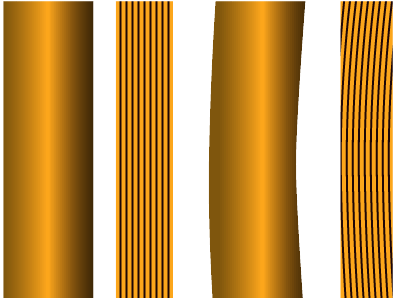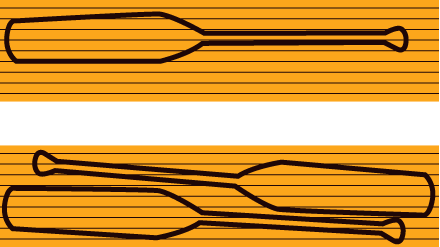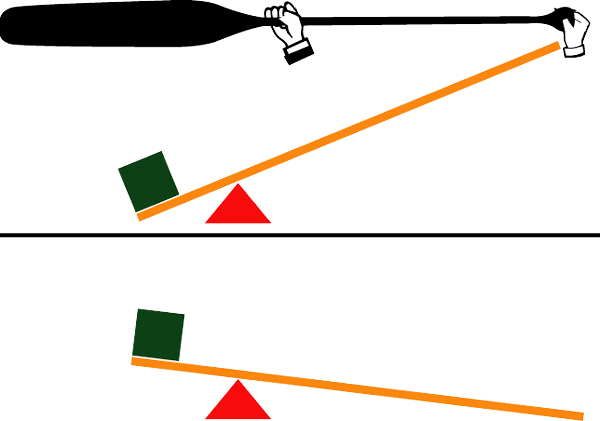|
Here is a cross section view of a typical tree from which planks are sawn for a paddle in the process of being shaped. The number of boards will depend on the diameter of the tree. Generally, large diameter trees will yield better quality paddles. You can can tell what section of a tree the paddle has come from by looking at the circular patter of the grain visible on the end of the paddle grip. Study this with the paddle in your hand and compare it against the illustration below. |
|
|
|
From the saw cuts illustrated above, Plank C would result in the most desirable paddle in this log. There would be another plank virutally identical to this one on the other side of Plank D. Plank A would also be a good choice, but would have a little more flex and also be a little more prone to warping if not handled properly. Plank B could be very prone to warping and is more likely to break under stress. Plank D is wood that is usually not very strong. Most saw mills will avoid cutting a plank from this section. Plank E will produce a good paddle with uniform flex and good strength, but the blade will be more prone to warping into a cup shape - especially if its not well cared for. |
Another
consideration From these
illustrations, you can see how grain can affect construction
when shaping a paddle in wood milled from a slightly bent
tree (illustrations on right), compared to shaping a paddle
in wood sawn from a straight tree (illustration at
left). The tree at
left would produce a well shaped paddle in terms of grain
while the tree at right would produce a paddle in grain that
might easily result in warping.

Yet
another consideration Often
cutting a paddle in the plank results in a bit of surplus
material too small to fit a second paddle inside. It's
possible to cheat a bit and angle the template, fitting a
padde in the top part and fitting another paddle in the
bottom part. This may produce warping with the paddle in the
shaft area and cause the shaft to break when the using the
paddle in situations requiring a lot of force.

Illustration
A Holding the
paddle near the bottom of the shaft makes paddling a bit
easier. You're using leverage to gain mechanical advantage.
Note the distance the load (the green box) moves when the
top of the lever is pushed down. Compare this to the
illustration below to see what happens when you slide the
bottom hand up the shaft a bit.
Illustration
B By holding
the paddle in a "choked up" position higher up the shaft,
you can move a lot more water for the same amount of
movement with your arms. This means more work, but your
ability to move water is often critical when paddling
rapids. By holding the paddle in this position, its possible
to make one effective stroke compared to two or three less
effective ones in the illustration above. This is the best
grip to use when you paddle in white water, but it's also
very effective for most conditions you might paddle
in. See the
chart
for comparison
What's
the most effective position for your paddling
style? The
Purple bar represents the distance that the hands
move on the paddle. The Green bar represnts the
distance moved by the paddle in the
water. In
Ilustration A, the paddle movement isn't as
much as in Illustration B Hand
position A is easier on the arms, but not as
effective in the water as hand position
B Illustration
A To keep
your paddle in top notch condition, proper storage is
essential. Ideally, keep the paddle in a cool dry
environment when it's not in use. The temperature shouldn't
vary a lot and there should be no direct sunshine on the
paddle. It's also a good idea to suspend the paddle in a
vertical position by tying a string on the grip and hanging
it in a position that doesn't contact anything. Keep water
from penetrating the wood by touching up any bare spots with
linseed oil. Before storing the paddle for the winter, sand
and varnish it if required. Be careful
about leaving your paddle laying on the ground. A paddle in
direct sunlight on cool, damp ground can easily warp because
of the difference in temperature between the top and the
bottom. Wooden
paddles should last a lifetime when cared for
properly. -back to
Blazing
Paddles
web site -
Getting
the most out of your paddle in the water



